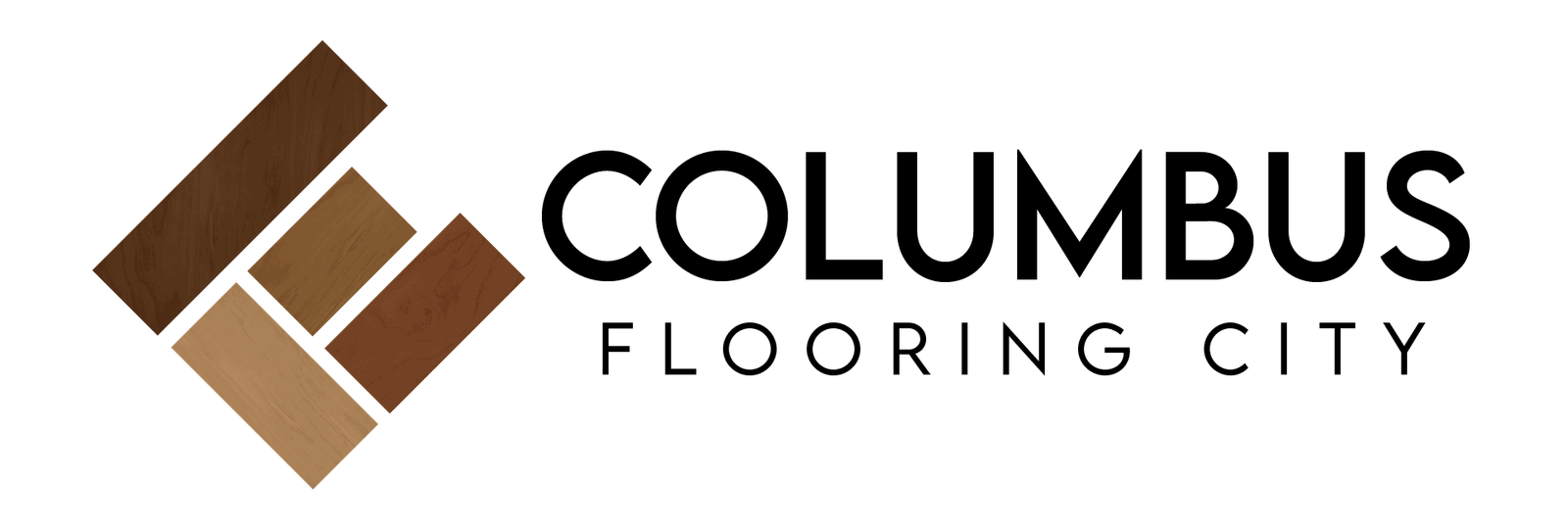Welcome to the ultimate guide on refinishing engineered wood floors! If you’re yearning to bring back the natural beauty of your flooring and breathe new life into your living spaces, you’ve arrived at the perfect resource.
Engineered wood floors are beloved for their durability and timeless elegance, but over time, they may lose their luster and show signs of wear. However, fear not! With some knowledge and effort, you can transform your tired floors into stunning masterpieces again.
In this comprehensive guide, we will take you through the entire process of refinishing your engineered wood floor step-by-step. So, let’s roll up our sleeves and journey to revitalize your home’s most important foundation!
First, Let’s Understand Engineered Wood Flooring
Before we delve into the intricate process of refinishing engineered wood floors, let’s develop a solid understanding regarding what is engineered wood flooring. Unlike solid hardwood floors, crafted from a single piece of wood, engineered wood comprises multiple layers of wood veneers bonded together, with a top layer of genuine hardwood.
This construction imparts remarkable stability and resistance to moisture, making it a versatile choice for various environments. Furthermore, engineered wood floors offer various styles, finishes, and wood species, allowing homeowners to find the perfect fit for their aesthetic preferences.
Does engineered wood flooring cost bother you? Discover our affordable, high-quality engineered wood floors that enhance your living spaces effortlessly. With genuine hardwood top layers and exceptional stability, our floors combine timeless beauty with durability. Choose from various styles and finishes to find your perfect match. [Product listing here]
Materials and Tools:
To successfully refinishing engineered wood floors, you will need the following materials and tools:
Materials:
- Floor cleaner or mild soap
- Sandpaper (coarse, medium, fine)
- Stain (optional)
- Polyurethane or floor finish
Tools:
- Broom and dustpan
- Vacuum cleaner
- Orbital sander
- Clean cloth or mop
- Paintbrush or roller for stain application
- Lambswool applicator or foam brush for finish application
- Protective gear (gloves, goggles, mask)
Now that we have gathered our supplies, let us dive into the step-by-step process of refinishing engineered wood floors, ensuring your floors receive the attention they deserve.
Step 1: Preparing the Surface: Cleaning Your Engineered Wood Floor
Before commencing the transformative journey of sanding, cleaning your engineered wood floor thoroughly is crucial. This preparation eliminates any dirt, debris, or residue that could interfere with the refinishing process. Begin by sweeping the floor to remove loose particles, then employ a vacuum cleaner with a soft brush attachment to meticulously reach every nook and cranny. Once complete, take a clean cloth or mop and gently cleanse the surface with a floor cleaner or mild soap solution. Allow the floor to dry fully before proceeding to the next step, ensuring a pristine canvas for refinishing.
Step 2: Surface Preparation: Gentle Sanding to Restore the Beauty
Now, it’s time to unleash the power of sanding and restore your floor’s natural charm. Embry on a gentle sanding adventure with an orbital sander armed with coarse-grit sandpaper. The aim here is not to obliterate the existing finish but to create a smooth, scuffed surface that will facilitate optimal adhesion of the new finish. Always sand in the direction of the wood grain to prevent unsightly scratches. Once the initial pass is complete, transition to medium-grit sandpaper, refining the surface further. Conclude with fine-grit sandpaper to achieve a flawlessly smooth texture.
Step 3: Dust Removal: Thorough Cleanup for a Flawless Finish
This step is very crucial for the ideal refinishing engineered wood floors. The sanding process inevitably generates copious dust, demanding meticulous cleanup before moving forward. Utilize a vacuum cleaner and a tack cloth, a specialized sticky cloth designed to capture fine dust particles, to meticulously eliminate all traces of debris. Ensuring a dust-free surface lays the foundation for the subsequent staining and finishing steps, guaranteeing an excellent outcome.
Step 4: Enhancing the Look: Applying Stain (Optional)
At this juncture, creative possibilities open up as you consider staining your engineered wood floor. While not mandatory, staining offers an opportunity to enhance the color or refresh the appearance of your flooring. Select a stain color that harmonizes with your interior décor and refer to the manufacturer’s instructions for application guidance. Employ a paintbrush or roller to apply the stain evenly in manageable sections. Following the application, delicately wipe off any excess stain with a clean cloth and allow it to dry according to the recommended drying time specified by the manufacturer.
Step 5: Protective Coating: Applying the Finishing Touch
Prepare to witness your engineered wood floor truly come to life as we embark on the final step of applying the finish. Armed with a lambswool applicator or foam brush, delicately and methodically coat the surface with polyurethane or the chosen floor finish. Employ long, even strokes to achieve an impeccably smooth and consistent finish. Proceed section by section, being mindful not to overlap areas to ensure even drying. Adequate ventilation is crucial during the application, allowing for improved air circulation and optimal drying conditions. Adhere to the manufacturer’s instructions regarding drying time and the recommended number of coats, typically two to three, for an enduring finish of exceptional quality.
Step 6: Allowing the Floor to Set: Curing for Long-lasting Results
Having successfully applied the final coat of finish, exercise patience and grant your floor the time it needs to cure. This crucial phase, typically spanning several days, requires restraint and careful consideration to prevent damage to the newly refinished surface. Refrain from placing heavy furniture or rugs on the floor during this period, allowing the finish to harden and attain maximum durability. By allowing the necessary time for curing, you will reap the rewards of flawless, long-lasting refinishing engineered wood floors that will grace your home for years to come.
Expert Tips for a Successful Refinishing Project
As you embark on the refinishing engineered wood floors journey, keep these valuable tips in mind to ensure a successful outcome:
- Heed the manufacturer’s guidelines: Each engineered wood floor and refinishing product may have specific instructions and requirements. Thoroughly review and follow the guidelines provided by the manufacturer to achieve the best possible results.
- Test the stain and finish: Before applying the stain or finish to the entire floor, test a small, inconspicuous area or a spare piece of engineered wood. This precaution allows you to gauge the products’ color, texture, and overall effect before committing to the entire floor.
- Work in manageable sections: To maintain control and precision throughout the refinishing, divide your floor into manageable sections. You ensure consistent results and avoid unnecessary mistakes or oversights by devoting attention to each area individually.
- Prioritize personal safety: Throughout the refinishing process, prioritize your well-being by wearing appropriate protective gear, such as gloves, goggles, and a mask. Protect yourself from potential hazards, including dust, fumes, and accidents, for a safe and enjoyable experience.
Knowing When to Seek Professional Assistance
Although refinishing engineered wood floors can be an immensely rewarding DIY project, certain circumstances warrant the expertise of professionals:
- Extensive damage: If your engineered wood floor exhibits significant damage, such as deep scratches, dents, or warped boards, it is advisable to consult a professional. They possess the necessary skills and knowledge to assess the condition of the floor and determine if repairs or replacements are required before refinishing.
- Lack of experience: If you lack experience or confidence in your refinishing skills, enlisting the assistance of professionals is a wise decision. They possess the expertise and specialized tools to ensure flawless results, sparing you the stress of potential mistakes or poor outcomes.
Maintaining the Beauty of Your Refinished Engineered Wood Floor
Congratulations on successfully breathing new life into your refinishing engineered wood floors! To preserve its allure and extend its lifespan, adhere to the following maintenance tips:
- Regular cleaning: Implement a routine of regular dusting and sweeping to remove loose particles and prevent scratches. Utilize a vacuum cleaner with a soft brush attachment or a microfiber mop to maintain cleanliness and retain the floor’s exquisite appearance.
- Exercise caution with moisture: Engineered wood floors are susceptible to moisture damage, necessitating caution when cleaning. Avoid using excessive water and opt for a slightly damp mop or a specialized wood floor cleaner recommended by the manufacturer.
- Protect from furniture: Safeguard your refinished floor from potential damage by attaching felt pads or furniture glides to the legs of heavy furniture. These simple additions minimize the risk of scratches and dents when moving or rearranging items.
- Embrace area rugs and doormats: Strategically place area rugs or doormats in high-traffic areas and near entrances to minimize the accumulation of dirt and debris. This proactive measure preserves the finish, diminishes wear and tear, and enhances the longevity of your refinished floor.
- Promptly wipe up spills: Accidents happen, but swift action can prevent long-term damage to your refinished floor. When spills occur, clean and wipe them up to avoid moisture seeping into the wood and causing stains or warping.
Conclusion
Congratulations! You have now acquired the knowledge and skills required to embark on the rewarding journey of refinishing engineered wood floors. Although there are advantages and disadvantages of engineered wood flooring but by following the step-by-step guide outlined in this comprehensive resource, you can elevate your living spaces and rejuvenate your home with floors that radiate elegance and charm.
Consider the manufacturer’s instructions, test products beforehand, prioritize safety, and exercise patience also when you perform engineered wood flooring installation. With dedication and perseverance, you will achieve a flawless finish that showcases the innate beauty of your engineered wood floor. So, seize the opportunity, unleash your creativity, and let your floors shine with renewed brilliance and splendor. Happy refinishing!
FAQs
Can engineered wood flooring be refinished?
Yes, engineered wood flooring can be refinished, but it is important to note that the number of times it can be refinished depends on the thickness of the top hardwood layer. Thicker top layers allow for more refinishing cycles.
Which is more affordable, replacing or refinishing engineered hardwood floors?
In most cases, refinishing engineered hardwood floors is more cost-effective than replacing them. Refinishing allows you to restore the existing flooring at a fraction of the cost of a new installation.
How do you restore engineered wood floors?
Restoring engineered wood floors involves a multi-step process, including cleaning the floor, light sanding, removing dust, applying stain (if desired), applying the finish, and allowing the floor to cure. Following this step-by-step guide will help you restore the beauty of your engineered wood floors.
How much does it cost to sand and refinish engineered hardwood floors?
The cost of sanding and refinishing engineered hardwood floors can vary depending on factors such as the area’s size, the floor’s condition, and the location. Obtaining quotes from professional contractors is recommended to get a more accurate estimate based on your specific requirements.


